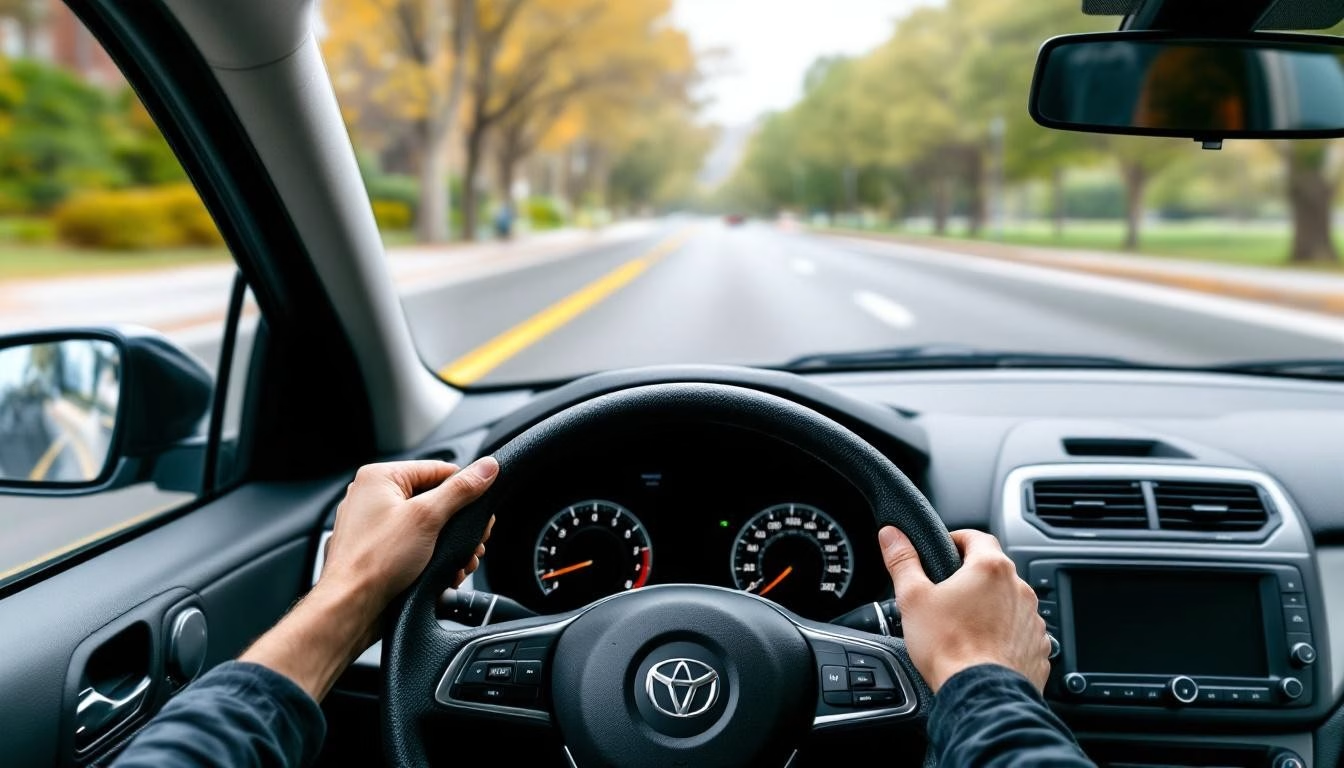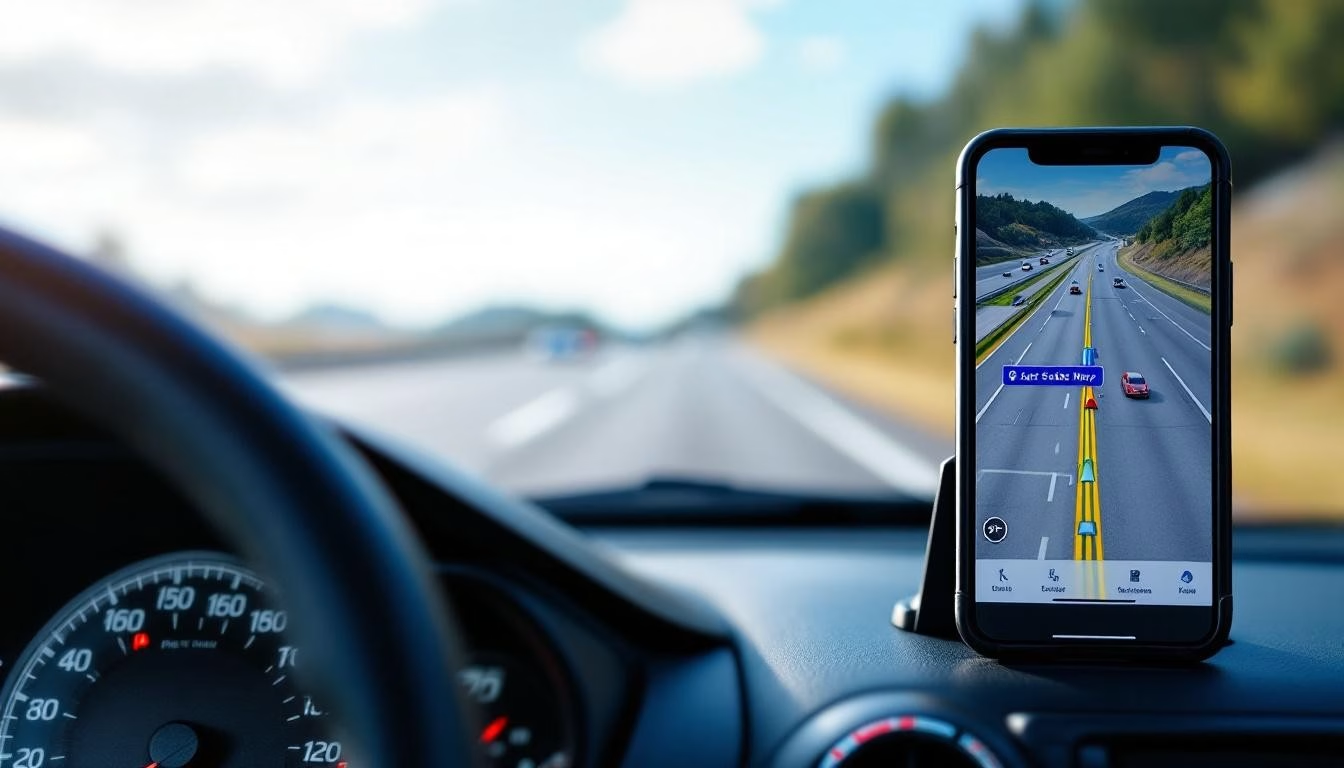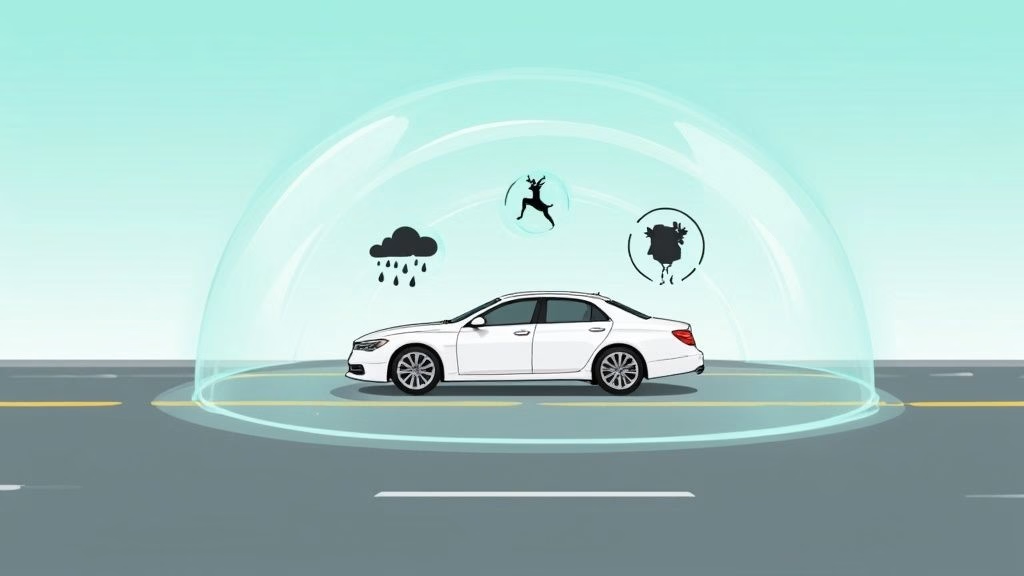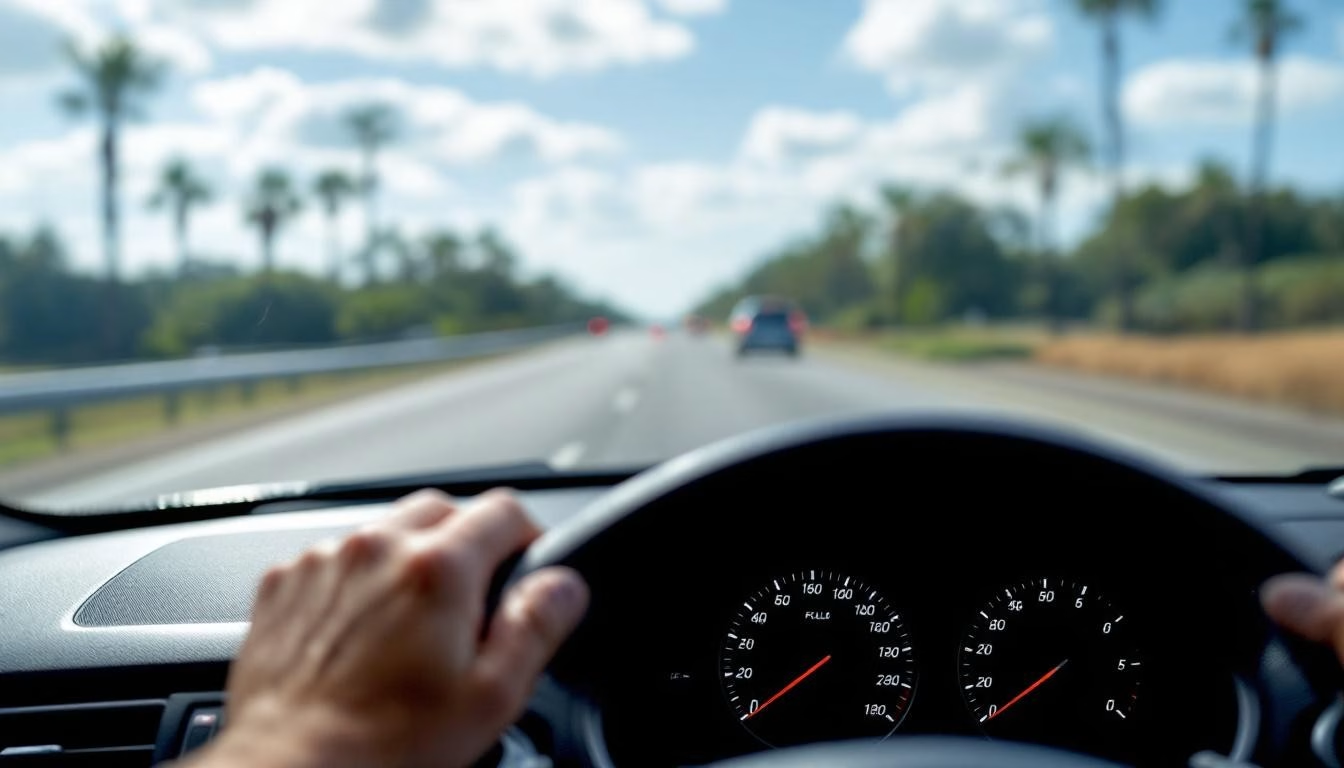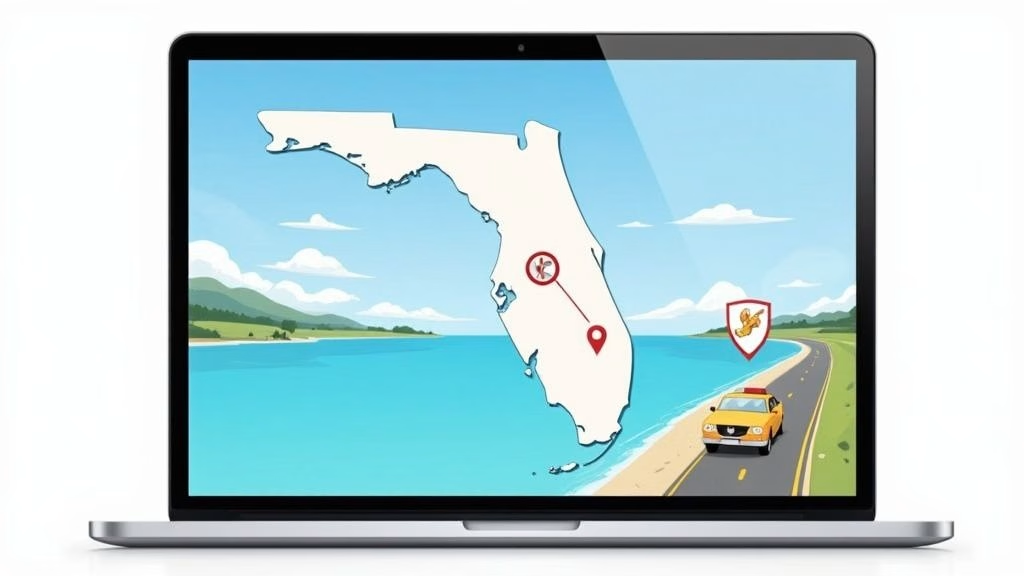Every year, over 6 million car accidents occur in the United States, with human error causing 94% of serious traffic crashes. Understanding defensive driving meaning can dramatically reduce your risk on the road.
At floridanewdriver.com, we believe mastering these proactive techniques transforms average drivers into safety-focused professionals. This approach saves lives, money, and stress while building lasting confidence behind the wheel.
What Makes Defensive Driving Different
Defensive driving represents a fundamental shift from reactive to proactive behavior behind the wheel. Defensive driving is a set of driving skills and techniques that allow drivers to defend themselves against possible collisions caused by poor driving, weather, and unexpected situations. This approach goes beyond basic traffic rule compliance and actively anticipates hazards before they become dangerous.
Standard drivers typically react to situations as they unfold. Defensive drivers constantly scan their environment and position themselves to avoid problems entirely. This proactive mindset creates a buffer zone of safety that traditional reactive approaches cannot match.
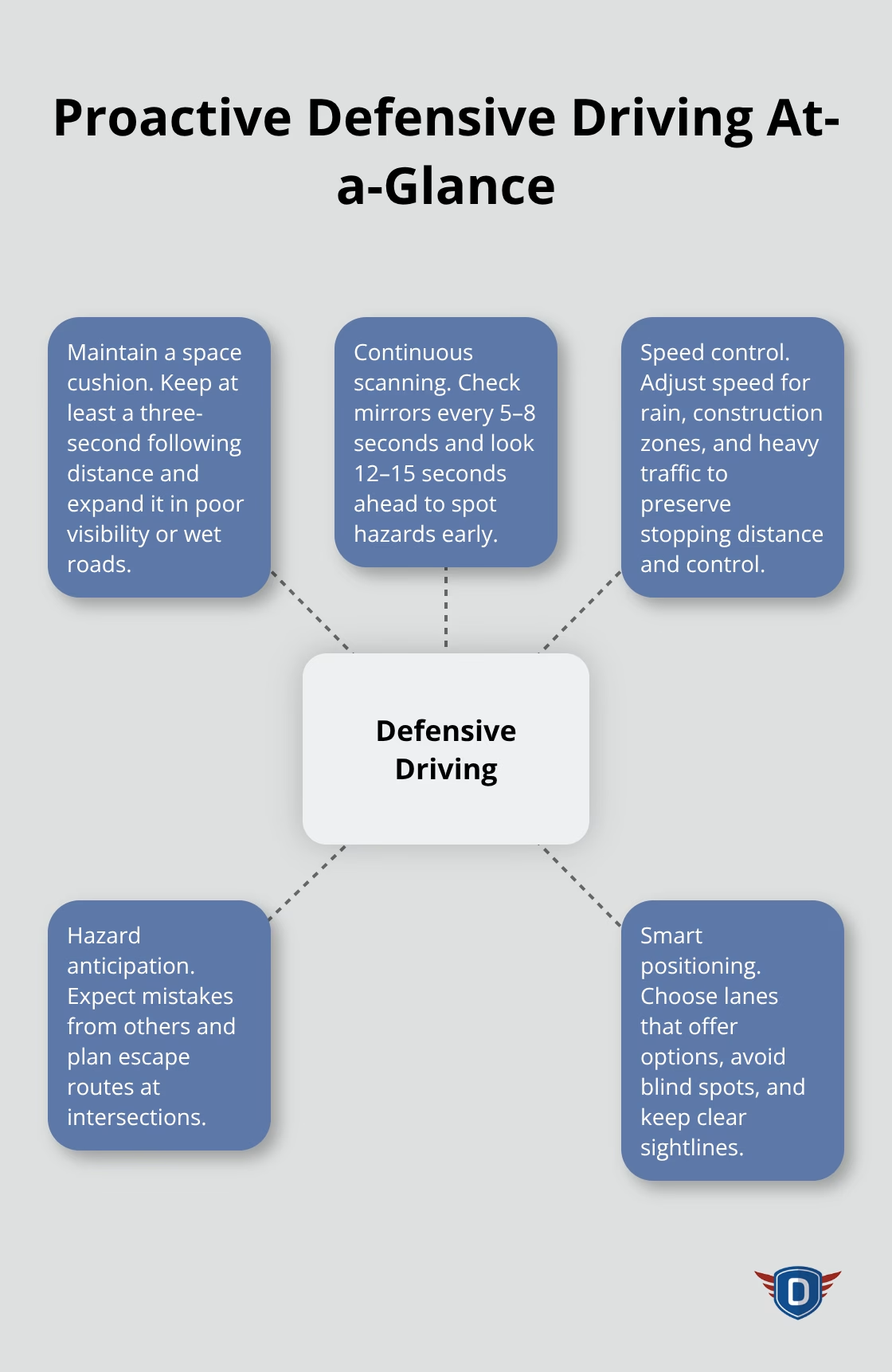
The Three-Second Rule and Strategic Distance
Proper following distance forms the foundation of defensive driving techniques. Safe following distance should be maintained at all times, with additional space required during poor visibility or wet road conditions for safe stops.
Defensive drivers also practice systematic scanning techniques, which involve checking mirrors and blind spots regularly to maintain complete situational awareness. This systematic approach catches potential hazards before they develop into emergencies.
Speed Management as a Safety Tool
Speed management becomes strategic rather than automatic in defensive driving. Defensive drivers adjust speed appropriately during challenging conditions such as rain, construction zones, or heavy traffic. These speed management techniques significantly improve safety compared to standard driving practices.
Weather conditions demand immediate speed adjustments. Rain increases stopping distances significantly, while snow and ice can greatly increase the space needed to stop safely.
Mental Preparation and Hazard Anticipation
Defensive driving requires a complete mindset transformation that expects the unexpected from other road users. This mental approach assumes other drivers will make mistakes, run red lights, or change lanes without signals. Defensive drivers plan escape routes at intersections and maintain vehicle positions that provide multiple options when hazards appear.
Drivers who practice these mental strategies show lower rates of aggressive behaviors and road rage incidents. This creates safer conditions for everyone on the road and reduces the stress that comes with constant emergency reactions.
These foundational principles set the stage for understanding the tangible benefits that defensive driving delivers to both individual drivers and the broader community.
Why Defensive Driving Pays Off
The National Safety Council reports that defensive driving reduces collision risk by approximately 33%, which translates to tangible financial and personal benefits. Drivers who complete defensive driving courses experience fewer accidents according to research studies, which makes this investment one of the smartest decisions for long-term safety and savings.
Insurance Premium Reductions Worth Hundreds
Most major insurance companies offer defensive driving discounts that range from 10% to 15% off annual premiums. State Farm, Geico, and Progressive provide these reductions for drivers who complete certified courses, which saves the average driver $150 to $300 yearly. These savings compound over time and often recover course costs within the first year.
Some insurers extend discounts for three years after completion, which maximizes long-term financial benefits. Commercial drivers see even larger savings, with fleet insurance rates that drop significantly when companies mandate defensive driving training for employees.
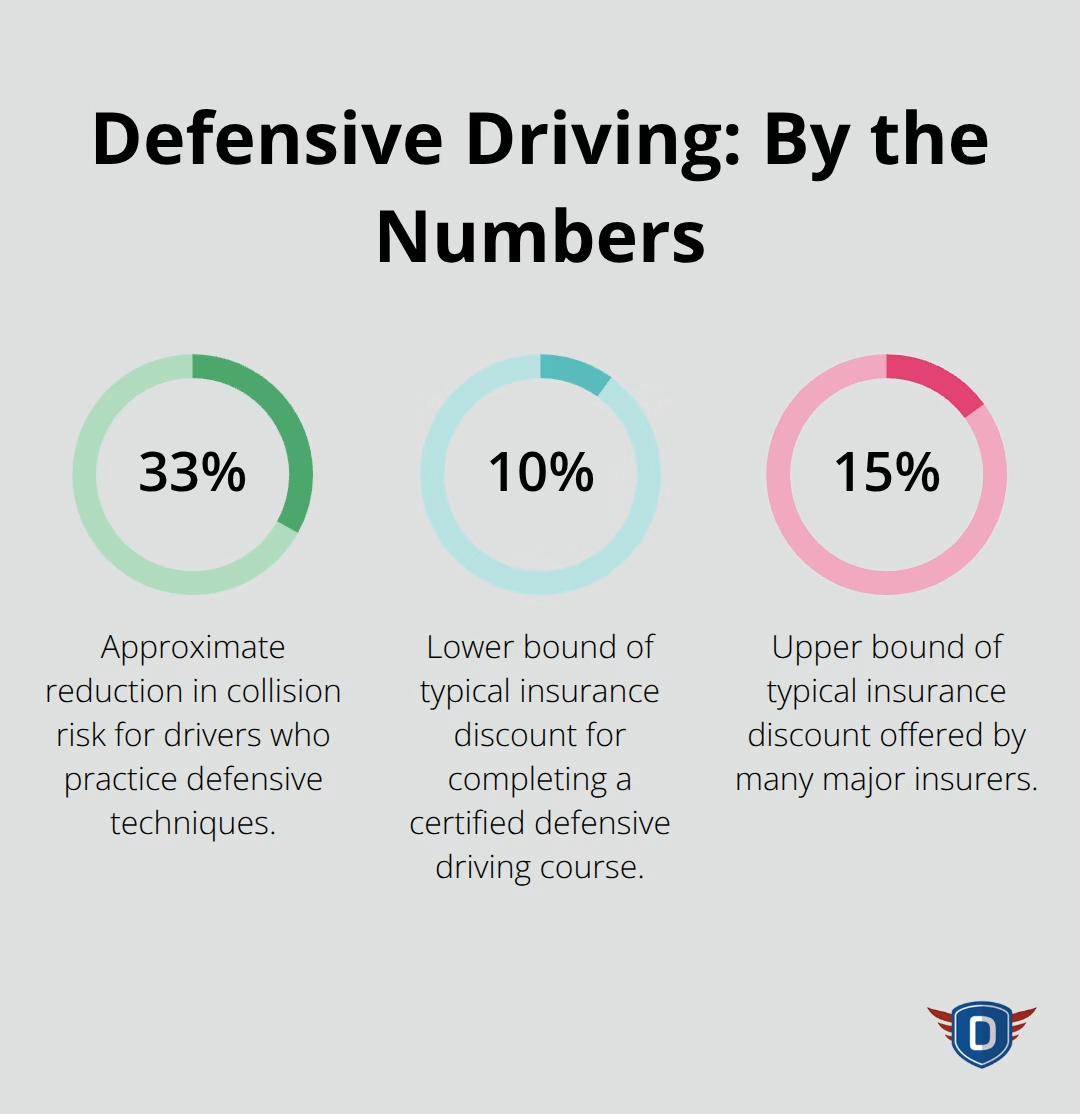
Stress Reduction Through Predictable Control
Defensive drivers report less stress related to driving compared to reactive drivers, according to AAA Foundation research. This reduction stems from the ability to anticipate problems rather than react to emergencies. Drivers who scan ahead and maintain safe distances experience fewer heart-pounding moments and arrive at destinations with greater calm.
The proactive approach eliminates the constant anxiety that comes with reactive patterns. Professional drivers who use these techniques show lower cortisol levels and better overall health outcomes (proving that defensive driving benefits extend beyond accident prevention into measurable wellness improvements).
Legal Protection and Violation Prevention
Defensive drivers face significantly fewer traffic violations and legal complications. The National Highway Traffic Safety Administration data shows that drivers who practice defensive techniques receive fewer speeding tickets and moving violations. This clean record prevents license suspensions and maintains professional driving privileges for commercial operators.
Court costs and legal fees add up quickly when violations occur. Defensive drivers avoid these expenses while maintaining the clean records that employers and insurance companies value most. These legal benefits become particularly important for drivers whose careers depend on maintaining spotless records.
These financial and personal advantages create a foundation for mastering the specific techniques that make defensive driving so effective in real-world situations.
How to Master Defensive Techniques
Proper Distance Prevents Rear-End Crashes
The three-second rule represents the absolute minimum safe distance, but experienced defensive drivers extend this to four or five seconds during normal conditions. The National Highway Traffic Safety Administration data shows that rear-end collisions are a significant cause of traffic accidents, with most occurring because drivers follow too closely. Count the seconds between when the car ahead passes a fixed object and when you reach that same point. Add one extra second for every 10 mph above 40 mph, and double your distance during rain or snow.
Commercial trucking companies that enforce strict distance policies report accident rates 40% lower than industry averages. This distance provides reaction time and space that prevents the chain-reaction collisions that kill thousands of drivers annually. Aggressive drivers who tailgate save mere seconds on their commute while they dramatically increase their crash risk.
Systematic Scans Catch Hidden Hazards
Professional drivers check their mirrors every 5 to 8 seconds and scan intersections from 12 seconds away. This systematic approach catches hazards that reactive drivers miss completely. Look for pedestrians who step between parked cars, cyclists who approach from behind, and vehicles that run red lights at intersections. The Insurance Institute for Highway Safety reports that drivers who practice structured scan techniques avoid 60% more potential collisions than those who rely on peripheral vision alone.
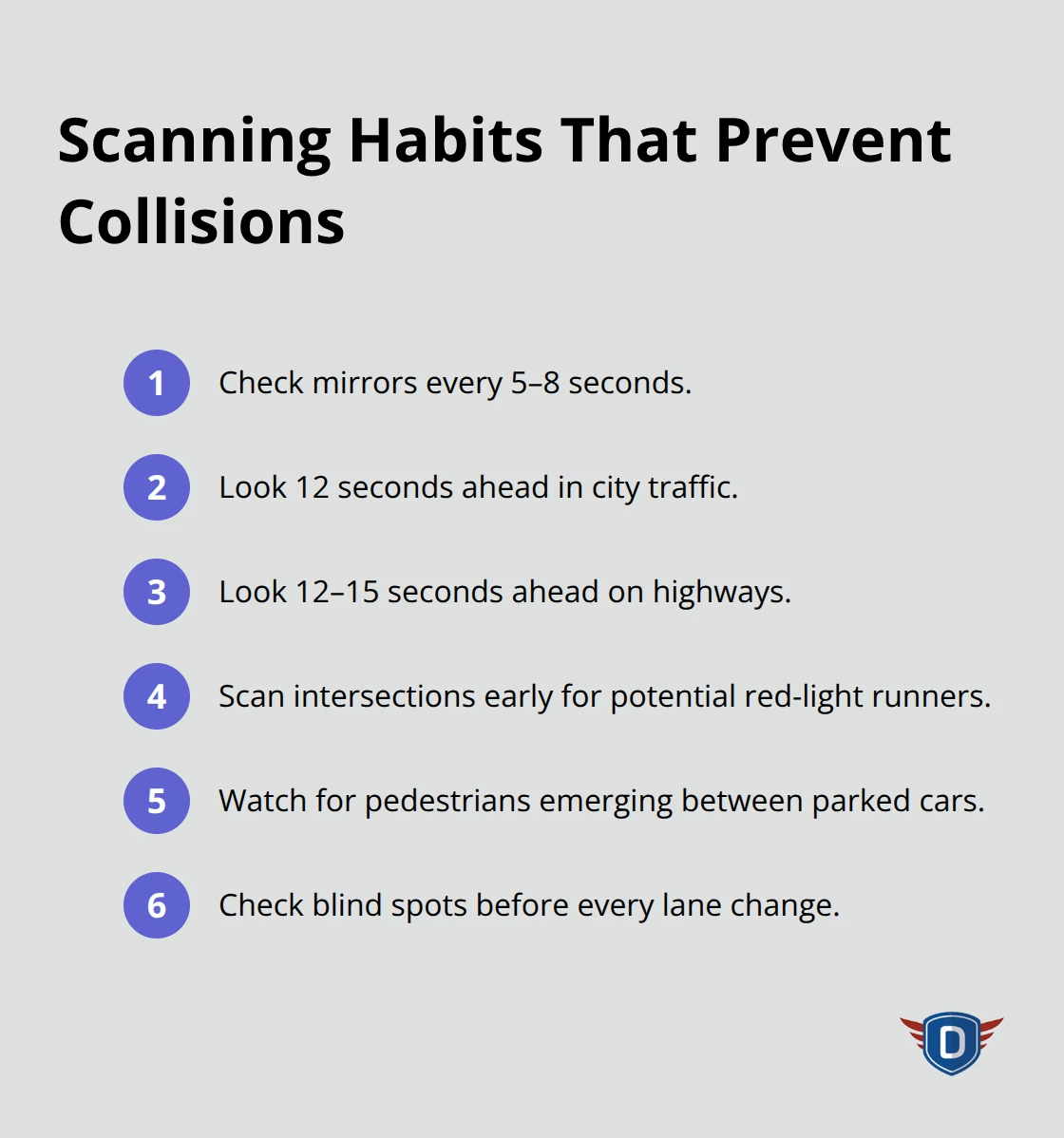
Focus your attention 12 to 15 seconds ahead on highways and adjust your scan pattern for city roads. Check your blind spots before every lane change and shoulder check even when your mirrors appear clear. This methodical approach transforms the experience from a series of reactions into a controlled, predictable activity that dramatically reduces accident risk.
Weather Conditions Demand Speed Cuts
Rain increases stop distances by 25% on average, while snow and ice can triple the space needed to stop safely. The Federal Highway Administration reports that approximately 12 percent of crashes – nearly 745,000 crashes – are weather-related, with most accidents occurring during the first few minutes of precipitation when roads become most slippery. Reduce speed by 10 mph below posted limits during light rain and cut speeds in half during heavy downpours or snow.
Defensive drivers also increase distance to six seconds minimum during poor weather and avoid sudden acceleration or brake applications that can cause skids. These adjustments prevent the hydroplane situations and loss of control that trap reactive drivers who maintain normal speeds during dangerous conditions.
Final Thoughts
Defensive driving meaning transforms your approach to road safety and delivers measurable benefits that extend far beyond accident prevention. The statistics speak clearly: drivers who practice these techniques reduce their collision risk by 33% while they save hundreds of dollars annually through insurance discounts and avoided violations. The financial advantages compound over time as insurance savings of $150 to $300 yearly combine with reduced maintenance costs and legal fees.
These techniques also eliminate the stress and anxiety that reactive approaches create, which leads to better health outcomes and more enjoyable travel experiences. Professional drivers who master defensive skills report lower cortisol levels and improved overall wellness (proving that benefits extend beyond simple accident prevention). The proactive mindset creates predictable control that reactive patterns cannot match.
We at floridanewdriver.com provide comprehensive driver education programs that teach these lifesaving techniques through expert instruction. Our programs help students master defensive skills that create safer roads for everyone while they build the confidence that comes from proactive vehicle control. Start your defensive journey today with proper distance maintenance, systematic environmental scans, and appropriate speed adjustments for conditions.

